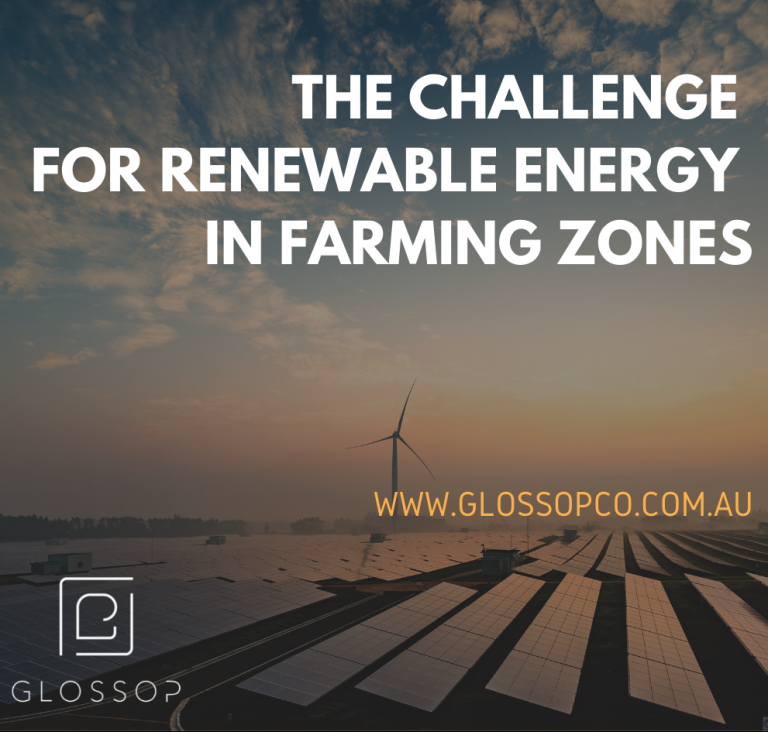The United Nations Framework Convention on Climate Change has adopted the Paris Agreement, which aims to limit global warming to well below 2°C, with an aspirational goal of 1.5°C. We can achieve this by reducing the production of greenhouse gases in part by shifting away from energy sources that consume carbon.
The consequences of humanity failing to meet these goals are incomprehensible.
Urban systems are responding to this challenge but whether these changes will happen fast enough or be significant enough remains to be seen. A shift away from energy generation based on burning fossil fuels and towards renewable forms of energy (like solar) is part of this systematic response.
That said, the architecture of the Victoria Planning Provisions has been designed to focus not only on the site-specific impacts of a proposal, but to ensure that it ‘implements’ State and local planning policies. Indeed, the first purpose of almost every control in the Planning Scheme is to ‘Implement the Municipal Planning Strategy and the Planning Policy Framework’. In practice this is often easier said than done. Frequently, policy goals come into conflict with each other. For instance, proposals for more affordable housing might conflict with amenity or neighbourhood character policies
In a recent VCAT case Green Gold Energy Pty Ltd v Minister for Planning [2022] VCAT 118
the challenge for the Tribunal, as the decision maker, was to balance objectives that seek to protect productive irrigated agricultural land and those that seek to facilitate renewable energy and the reduction of greenhouse gas emissions. These are both sensible and important policy goals.
With regard to this balancing, Members Bennett and Dawson found that:
On the one hand, the Land is in the FZ and the GMID, which brings with it a certain expectation for agricultural and irrigation use. On the other hand, the Land is subject to the Guideline whose purpose is to assist the granting of a permit for solar energy facilities and specifically deals with identifying suitable locations for solar energy facilities, the consideration of solar energy facilities in declared irrigation districts, and avoiding loss of high-value agricultural land. The Guideline and the policy environment provide a strong emphasis on the need to protect productive, state-significant agricultural land. Solar energy facilities located in declared irrigation districts, that have benefited from Commonwealth and State government investment in infrastructure modernisation, need to ensure that the integrity of the irrigation system is maintained.
When we balance the matters before us, we find the balance weighs in favour of approval.
John Glossop prepared a statement of expert evidence in Green Gold. John Cicero (assisted by Edward Mahony) of Best Hooper successfully represented the Applicant for Review. Evidence was also presented by Daryl Poole of RM Consulting Group and Mark Jempson of Venant Solutions.


